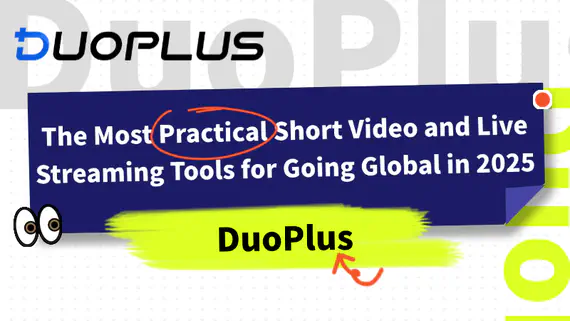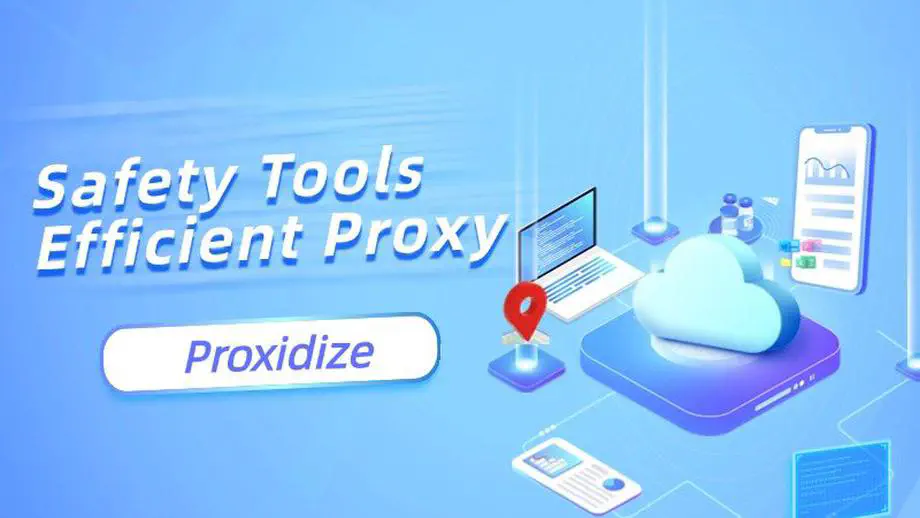
The Most Practical Tools for Short Video and Live Streaming in 2025, Including Free AI Video Tools
By mid-2025, cross-border e-commerce has become a powerful channel for businesses and individuals to gain new revenue …

When you’re running more than a handful of accounts across platforms, you stop thinking about tools and start thinking about structure. Not flashy dashboards or new extensions — actual systems that hold up under load. Because what breaks campaigns at scale isn’t usually the content, or even the strategy. It’s the infrastructure under it. That’s where segmentation comes in.
Segmentation means treating each account like its own environment. Its own fingerprint. Its own proxy. Its own behavior. Not just for the sake of separation — but because platform rules demand consistency. And without that, nothing works for long.
It’s not a buzzword. Segmentation just means one account per stack. That includes:
You’re not hiding anything. You’re building identities that look and behave like they belong. Because when platforms detect links — shared behavior, recycled logins, reused fingerprints — things unravel. Accounts get flagged. Reach gets throttled. And you’re back to scrambling.
This also means planning in advance. If you know you’re going to be running 10 accounts, you build 10 containers. Not just logins — containers. Fingerprints, proxies, session memory, all built from the ground up. That’s how operators get away with volume without raising alarms.
The problem isn’t just bans; it’s inconsistency. Campaigns that worked last week suddenly stall. Ad approvals take longer. Logins trigger phone verifications for no reason. And all of it stems from environment mismatches — your proxy says Canada, your browser says Singapore, your session behaves like an emulator.
These flags don’t always come in loud. Sometimes the penalty is silent. Your ads serve slower. Your listings get pushed lower. Your engagement tanks. And because it’s not a suspension, you don’t even know it’s happening.
Segmentation avoids that by keeping each environment self-contained. Everything matches. Nothing overlaps. And when that happens, accounts stop breaking. They just work.
1. Accounts That Live Longer: Clean setups don’t get flagged for things they didn’t do. If one account fails, the others stay untouched.
2. Less Guesswork: When something breaks, you know exactly where to look. No chain reactions, no shared risk.
3. Growth That Doesn’t Crack: You’re not scaling one setup until it falls over. You’re duplicating a system that already holds. Copy, not stretch.
4. Fewer Restarts: No more burning accounts just to keep going. Segmented environments hold their trust longer, and keep working past the short term.
5. Testing Without Wrecking Everything: Try new flows, offers, or scripts without risking the core. If something fails, it doesn’t take others down with it. You isolate tests the same way you isolate accounts.
6. Cleaner Data: When each container is stable, your performance metrics actually mean something. You’re not comparing results across compromised environments. You’re reading real outcomes.
Start With the Proxy: IP reputation matters. So does region. So does rotation speed. Mobile proxies are often the most reliable for platforms that expect traffic from phones — but only if the pool is clean. Don’t assume all mobile proxies behave the same. Vet them. Check for IP uniqueness. Look at rotation timing. Run reputation tests.
Separate Your Profiles: Each account should run in its own browser profile. Full fingerprint isolation. No shared storage. No reused canvas or fonts. Use tools built for this — not multiple tabs. Cloning profiles without regenerating fingerprints defeats the point. If the fingerprint looks identical, platforms connect the dots. Make sure each environment looks like a different machine — because as far as the platform is concerned, that’s what you’re selling.
Behave Like a User Would: Warm up accounts. Spread actions across time. Don’t rotate IPs mid-session. Don’t rush logins. Don’t send the same message 50 times in 5 minutes. Platforms don’t just watch what you do — they watch how you do it.
Most teams don’t break things because they don’t know what they’re doing. They break things because five people log into the same account from five places, at five different times, on five different setups. The result is five platform warnings in one week.
If someone needs access, don’t give them a password. Give them the whole environment. Shared containers, session exports, or encrypted handoffs that preserve everything — headers, cookies, timezone, fingerprint. That’s how you keep the platform from seeing a ghost town of mismatched data.
When done right, this actually makes collaboration easier. The session doesn’t restart every time. You’re not re-authenticating over and over. Everyone just picks up where the last person left off.
If your automation stack is stitched together with duct tape, it’s going to break. That break might look like rate limits. It might look like shadowbans. It might just be accounts quietly underperforming because the platform is soft-flagging everything you send.
Automation works best inside clean containers. Each script, bot, or action runs in a profile built for it. It doesn’t share IPs. It doesn’t share device history. It doesn’t copy and paste logins across sessions.
If a bot fails, kill the container. The rest of the system keeps moving. That’s the power of segmentation. It isolates risk, contains failure, and lets you keep working instead of constantly rebuilding.
The more moving parts you have, the more your infrastructure needs to do the heavy lifting. Segmentation isn’t just about damage control. It’s how you build a system that doesn’t need to be watched 24/7. Something breaks, it breaks in a box. You fix that box and move on. The rest stays online.
It’s also what makes hiring tolerable. If your setup depends on everyone doing everything perfectly every time, it’s not going to scale. But if you give people isolated profiles, dedicated proxies, and workflows that can’t leak into each other — then training becomes procedural. Not personal. Mistakes become recoverable. Accountability becomes obvious.
Same goes for growth. Want to spin up 50 accounts in 10 regions? That’s not a new spreadsheet. That’s 50 stacks cloned from a clean template, deployed with intention. Every one of them segmented. Every one of them controllable. You’re not adding volume. You’re extending your system.
The goal is never to build something complex. It’s to build something stable. Something you don’t have to explain 12 times a week. Something that keeps running even when one operator, one account, or one tactic stops performing.
Segmentation gives you that kind of system. A setup where accounts behave cleanly. Tools reinforce each other. Teams stop stepping on each other’s toes. And every container tells a different story — just like it’s supposed to.
Key Takeaways:
If you’re running anything at volume — lead gen, ecom testing, outbound, affiliate offers, even just brand assets across markets — segmentation is how you stop playing defense. It’s not an advanced strategy. It’s the floor. If every account looks the same, comes from the same IPs, touches the same container, and runs the same automation — don’t be surprised when they all go down at once.
Segmentation doesn’t just protect what you build. It makes what you build worth protecting. Because it’s reliable. It’s repeatable. It’s scalable without collapsing under its own weight.
If you want fewer bans, better data, cleaner automation, and accounts that live long enough to matter — you segment. You isolate. You build clean. And then you let the infrastructure do its job.
That’s how you stop surviving campaigns. And start running systems.
Table of Contents

By mid-2025, cross-border e-commerce has become a powerful channel for businesses and individuals to gain new revenue …

Facebook and TikTok are essential applications for cross-border users, whether for work or personal life, and having …
No need to purchase multiple real phones.
With DuoPlus, one person can operate numerous cloud phones and social media accounts from a single computer, driving traffic and boosting sales for you.
